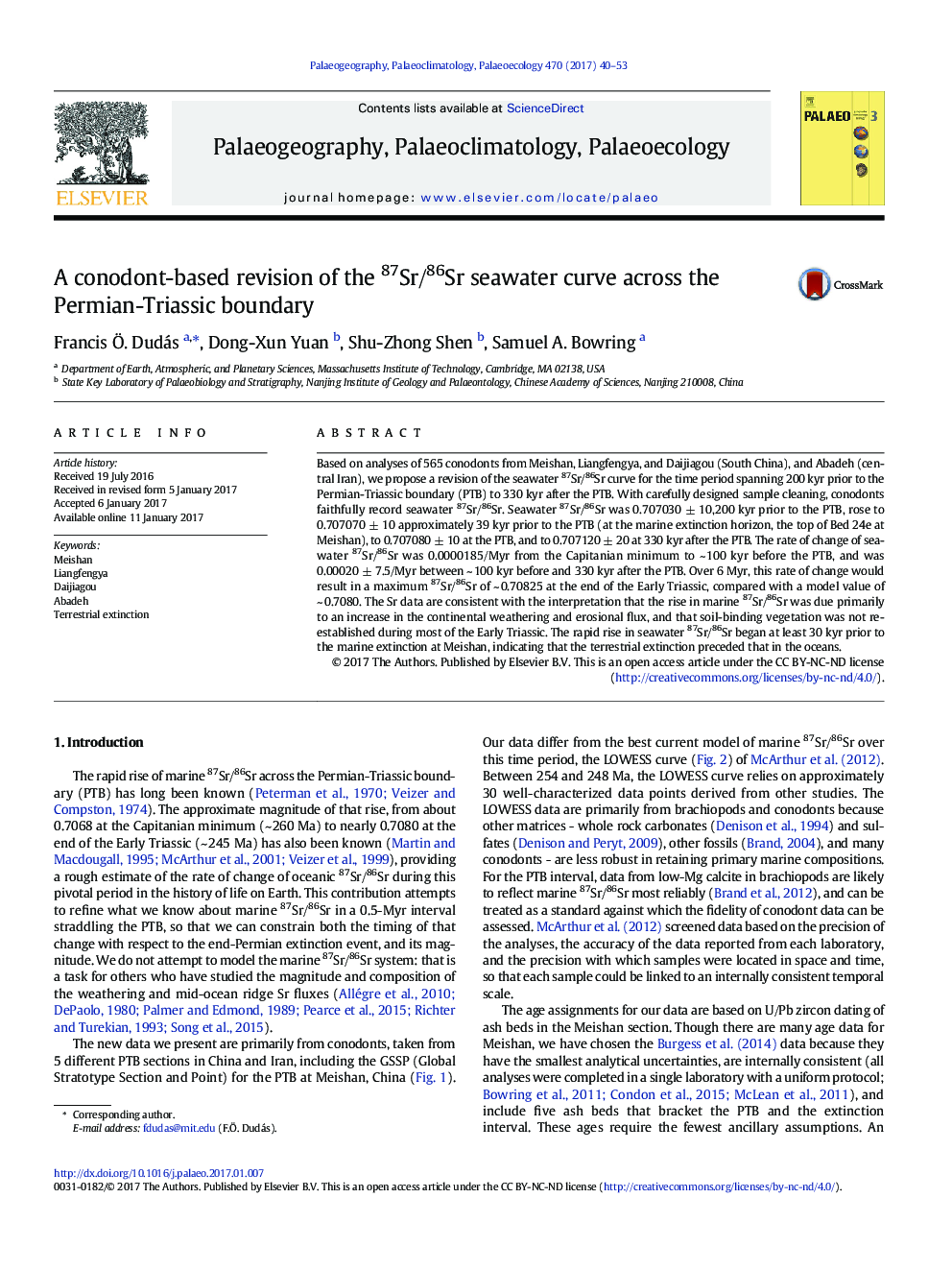| Article ID | Journal | Published Year | Pages | File Type |
|---|---|---|---|---|
| 5755909 | Palaeogeography, Palaeoclimatology, Palaeoecology | 2017 | 14 Pages |
Abstract
Based on analyses of 565 conodonts from Meishan, Liangfengya, and Daijiagou (South China), and Abadeh (central Iran), we propose a revision of the seawater 87Sr/86Sr curve for the time period spanning 200 kyr prior to the Permian-Triassic boundary (PTB) to 330 kyr after the PTB. With carefully designed sample cleaning, conodonts faithfully record seawater 87Sr/86Sr. Seawater 87Sr/86Sr was 0.707030 ± 10,200 kyr prior to the PTB, rose to 0.707070 ± 10 approximately 39 kyr prior to the PTB (at the marine extinction horizon, the top of Bed 24e at Meishan), to 0.707080 ± 10 at the PTB, and to 0.707120 ± 20 at 330 kyr after the PTB. The rate of change of seawater 87Sr/86Sr was 0.0000185/Myr from the Capitanian minimum to ~ 100 kyr before the PTB, and was 0.00020 ± 7.5/Myr between ~ 100 kyr before and 330 kyr after the PTB. Over 6 Myr, this rate of change would result in a maximum 87Sr/86Sr of ~ 0.70825 at the end of the Early Triassic, compared with a model value of ~ 0.7080. The Sr data are consistent with the interpretation that the rise in marine 87Sr/86Sr was due primarily to an increase in the continental weathering and erosional flux, and that soil-binding vegetation was not re-established during most of the Early Triassic. The rapid rise in seawater 87Sr/86Sr began at least 30 kyr prior to the marine extinction at Meishan, indicating that the terrestrial extinction preceded that in the oceans.
Keywords
Related Topics
Physical Sciences and Engineering
Earth and Planetary Sciences
Earth-Surface Processes
Authors
Francis Ã. Dudás, Dong-Xun Yuan, Shu-Zhong Shen, Samuel A. Bowring,
